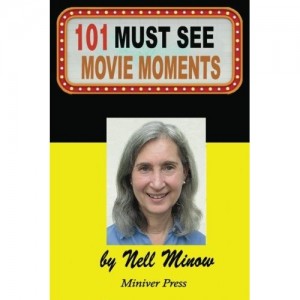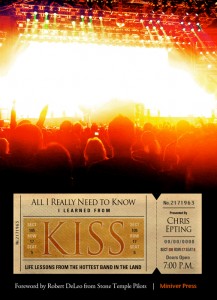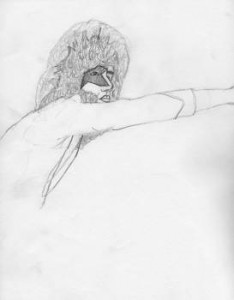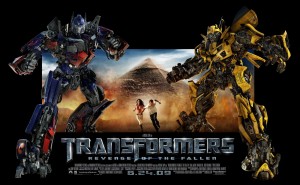My book, 101 Must-See Movie Moments , soon to be published on paper, is already an ebook and for three days — January 13-15, it is available for free! You don’t need to have a Kindle to read it. You can download a free Kindle app that works on any computer, tablet, or smartphone.
, soon to be published on paper, is already an ebook and for three days — January 13-15, it is available for free! You don’t need to have a Kindle to read it. You can download a free Kindle app that works on any computer, tablet, or smartphone.
From the introduction:
Many movies show us characters who surprise the others with their skill or courage. I will show you why “Amadeus” and “A League of Their Own” do it better than most. What can we learn from the opening credits? If they are designed by Saul Bass, they can be the most creative part of the movie. What do “Notting Hill” and an almost forgotten Bing Crosby movie do to show time passing more effectively than most prestige films? Check out the essay on “High Time.” What does DBTA mean? Find out in the essay on “Top Gun” and see why Goose from “Top Gun” is the best example. Why does everyone in the stands at a tennis game follow the ball except for one? Read the essay on “Strangers on a Train.”
Powerful scenes in “Annie Hall,” “School Daze,” and “A League of Their Own” feature characters we see for only a few seconds. The “B-story” couples get the best moments in “How Do You Know” and “17 Again.” Many movie heroines transform a tacky dress by removing some tulle or an overskirt. To see who did it best, watch Sophia Loren in “Houseboat.”
“Rich in Love” and “Miss Firecracker” are non-musicals with great musical numbers. The directors of “Die Hard” and “Raiders of the Lost Ark” changed their plans to take advantage of unexpected opportunities or unexpected obstacles while filming.
This book will guide you to Meryl Streep’s silliest appearance as a singing Bonnie Parker and a rare chance to see Broadway stars of the 1940’s show off their best drawing room manner. You will read about some of movie history’s best comic reactions to the way something tastes with James Stewart in “Bell Book and Candle” and Donald Meek in “State Fair.”
I love documentaries. There are unforgettable scenes no one expected to capture in “Hoop Dreams” and “The Last Waltz” and one of the sweetest final images ever shown on screen in “The Wild Parrots of Telegraph Hill.” In some of the essays I provide some background on the film or some thoughts on how movies address different challenges. In others, all there was to say was “Just watch it.”
The single most important attribute for a career in reviewing each week’s big studio releases is an infinite capacity for awful movies. We become critics because we love to watch great movies and then we end up sitting through an endless series of buddy cops, gross-out comedies, second-rate superheroes, chases, explosions, and remakes of television shows that some studio executive loved as a kid. And yet, almost always I can find some moment – some performance, line of dialog, production design, or insight – that makes me glad I saw it. Some of those moments are here as well.
For me, movies combine the best of every other art form. They contain elements of writing, theater, music, dance, and graphic design. They can be formal and stylized or intimate and improvised. Movies bring us inside their stories as no other art form can, allowing us to experience what is happening to the characters through the grandest sweep of adventure with marching armies or inter-galactic journeys to the smallest and most private moments with a close-up of a face showing devastating loss or whispered words of love and hope. Movies are life without the boring parts. They illuminate the human story by giving us a chance to see one or more characters resolve something that unsettles their lives with a conclusion that can be happy, sad, funny, or bittersweet but somehow gives us a satisfying sense of alignment and understanding.
We see the same stories over and over. A young person leaves home. A stranger comes to town. Two or more people who don’t know each other or don’t like each other have to accomplish some task, often involving a journey. We hear the same lines over and over. Two that seem to occur in nearly every movie are “Please, try to understand” or “Why don’t you try to get some rest.” What makes a movie memorable is in the details of plot, direction, cinematography, dialog, performance, lighting, and design that make these stories distinctive, touching, and authentic. This book includes some of my favorite examples and my thoughts on what makes them special.
 My new book is out in paperback! 101 Must-See Movie Moments
My new book is out in paperback! 101 Must-See Movie Moments is available on Amazon for $12, but I have three autographed copies to give away. It’s 101 brief essays on great moments in neglected movies (like “Miss Tatlock’s Millions,” “The April Fools,” and “Wives and Lovers,”) and neglected moments in classic movies, (like “Sounder,” “The Godfather,” “The Shining,” and “Top Gun”), plus the singing underpants in “The Tall Guy.” Send me an email at moviemom@moviemom.com with 101 in the subject line and tell me one of your favorite movie moments. Don’t forget your address! (US addresses only.) I’ll pick three winners at random on January 30. Don’t forget, whether you win a copy or not — if you write a review on Amazon, I’ll send you a free ebook — either my 50 Must-See Movies: Weddings or 50 Must-See Movies: Mothers.




